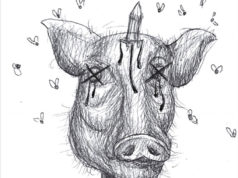The economists who study this stuff never bought into that, and a new study by University of Texas-Arlington economist Craig Depken found a wrinkle in the publicly funded sports stadium argument that surprised even him. On National Football League games days, cities that host the events have less economic activity than if there were no game. In fact, Depken found that on game days an average $7.8 million less spending occurred in those cities, costing each burg about $569,000 in sales tax revenues.
Depken looked at 15 years’ worth of games in Irving and Houston, comparing consumer spending in those cities in June (when no games are played) and in October. After factoring in the number of home games in October – and doing all sorts of math that would gives the average sports fan tired-head – Depken found NFL regular season games actually are a holding penalty on local spending.
Depken is not sure why, though he surmises that those going to the game have to pay so much for their tickets and $6 beers that they have much less to spend locally. “We don’t know if Arlington will lose $500,000 for every game played there,” Depken said, “but NFL games seem to be a net reducer on local spending.”
Maybe Jerry can help recoup the loss by dropping a few million every game day at an Arlington Wal-Mart, buying groceries and underwear and dog food for everyone. This program would be called “recycling the free money you taxpayers gave me.”
Bad Day at the Rock of Truth
They’ve gotta be using magnifying glasses at The Dallas Morning News these days to locate the last vestiges of staff morale. Last week, word was allowed to trickle down (you know what rolls downhill, don’t ya?) that there will be another round of buyouts offered to employees. The implied second shoe, of course, is layoffs, if not enough people take the buyouts – this after a layoff of about 150 people less than two years ago. The reason for the screw-tightening this time? A decision by parent company Belo to make its media empire more “internet-centric.” Similar staff reductions are being planned for at least a couple of other Belo papers.
Static gets that newspapers need to have active web sites, offering as many bells and whistles as the budget will allow. Heck, we’ll even concede that newspapers might someday figure out how to turn web surfers into actual news readers. But what it doesn’t get is, why does putting more news on the internet require fewer reporters, copy editors, photographers, etc?
For once, Static is not just picking on Belo. These kinds of decisions are coming from all over the news industry these days, as managers try to figure out how to keep their obscene profit levels up to satisfy Wall Street, while circulation figures inch lower. It’s the kind of thinking that has made some highly respected folks in this biz talk about how big corporate ownership in general is proving a failure for newspapers.
OK, that was nice, but now can we talk about Belo again? Did you know that in a Belo-owned park near the News and WFAA/Channel 8 buildings, there’s a giant sculpture of a screw? Arranged around it is a row of rigid little chairs, where, presumably, you can sit to watch the screw turn. Static doesn’t know the real name of the sculpture, but has one to suggest: Belo Management Training.











